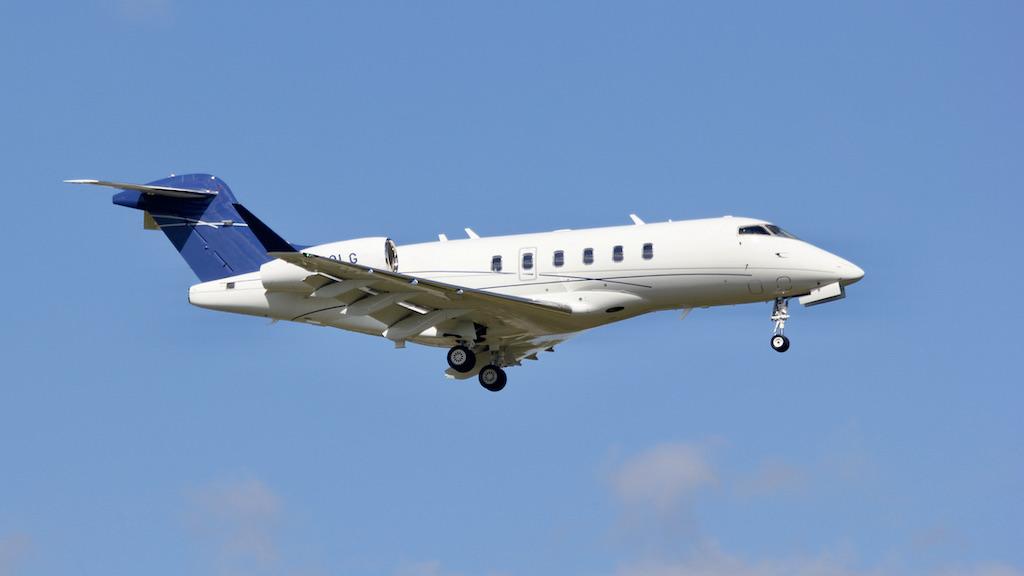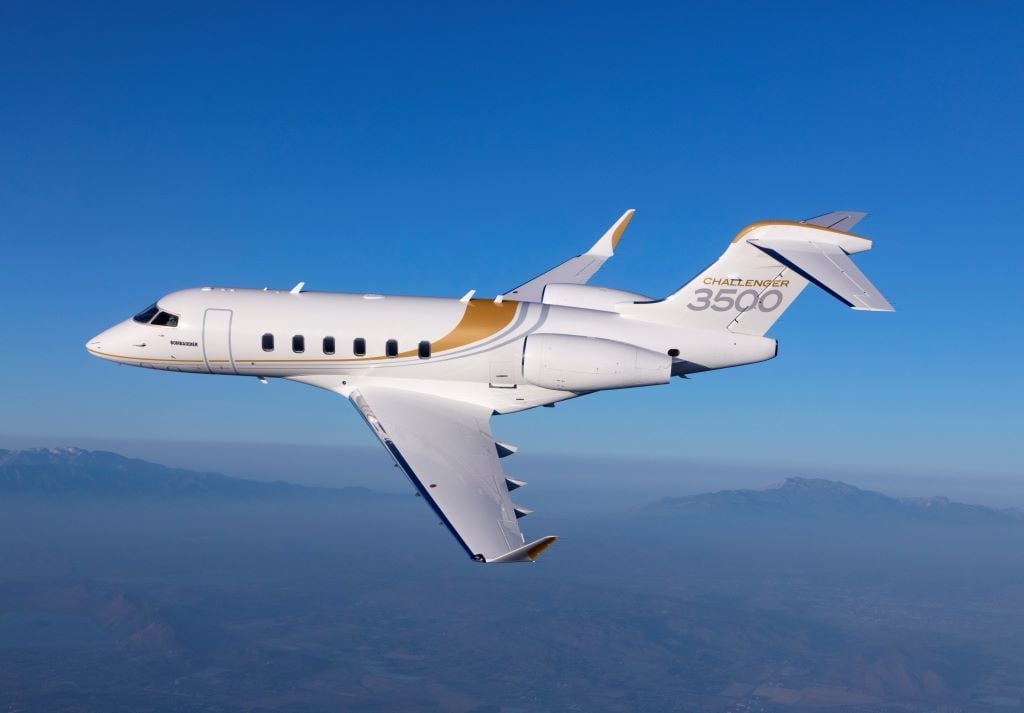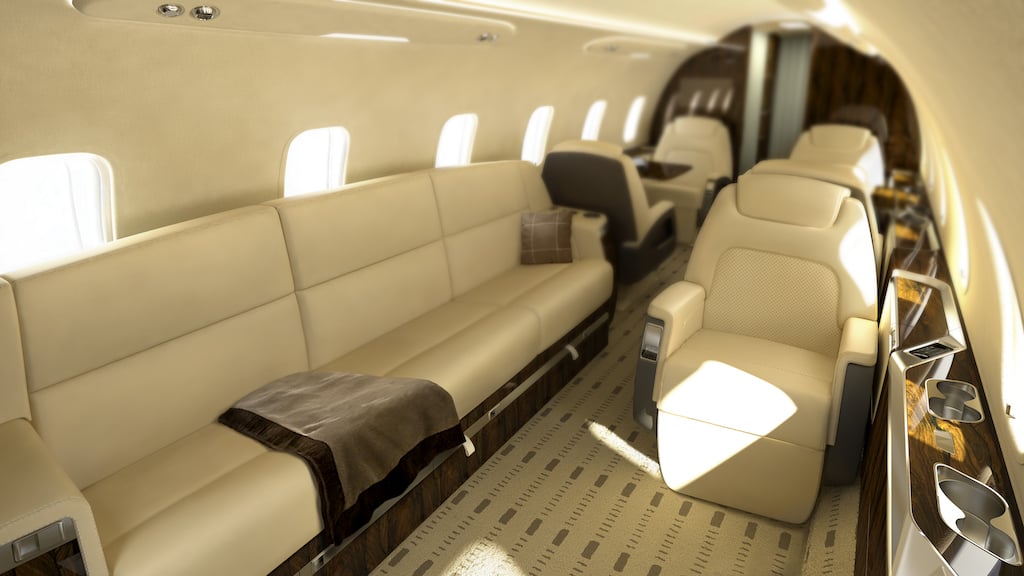
The number of preowned Challenger 350s listed for sale reached a high of 15 in September.
The number of preowned Bombardier Challenger 350s listed for sale reached a high in September, but sellers still have an edge when it comes to the super-midsize business jet, aircraft dealers say.
Roughly a year ago, there were five preowned Challenger 350s for sale, some of which commanded prices above what they sold for new, said Bryan Comstock, managing director with aircraft sales and acquisitions specialist Jeteffect. Last fall, the number of 350s for sale fell to just two, but since the start of 2023 the market had grown to 15, an all-time high, according to Comstock.
Still, the number of Challenger 350s for sale represented just 3.5% of the in-service fleet, attesting to the steady demand for the type. “Nine 350s sold over the past six months, which happens to be the same number that sold in the previous six-month period,” Comstock said. “So, there appears to be no fewer buyers, just slightly more availability—for now.”
David Foster, vice president of aircraft sales with QS Partners, had a similar observation. “The Challenger 350 market continues to be very active and with only 3% of the active fleet listed for sale [it] is still considered a strong seller’s market,” Foster said. “We experienced a normal summer slowdown, but activity is picking up and we anticipate this trend to increase as we move into the end of the year.”
As of September, the Aviation Week Fleet Discovery Database counted 413 Challenger 350s in service worldwide, with two in the hands of a third party.

Bombardier unveiled the Challenger 350, an upgraded version of the earlier, clean-sheet-design Challenger 300, at the EBACE convention in 2013. It certified the new model in June 2014.
The Challenger 350 has a maximum range with NBAA IFR reserves of 3,200 nm at Mach 0.80 with eight passengers, making it capable of spanning the continental U.S. nonstop, or the west coast to Hawaii. Departing at maximum takeoff weight (MTOW), the jet needs 4,835 ft. of runway in ISA sea-level conditions.
The Challenger siblings share the same type designation but new, canted winglets on the 350 extend its wingspan by about 6 ft. to 69 ft., increasing its aspect ratio and helping to improve climb capability and high-altitude efficiency. The Honeywell HTF7350 turbofans that power the Challenger 350, each with 7,323 lb. maximum takeoff thrust, improve on the 300’s HTF7000 engine, at 6,944 lb. takeoff thrust. MTOW increased to 40,600 lb. for the 350 from 38,850 lb. for the 300.
The 2022 factory-new list price of the Challenger 350 was $26.7 million, according to the Aircraft Bluebook. The average retail price—the average price for a mid-time, average aircraft at the end of the previous quarter—was $22 million. Likely buyers include owners of Challenger 300s upgrading to the 350, as well as Hawker 800XP and Learjet 45 and 75 owners, according to Jetnet.
“While the Challenger 300 has always been a very popular upgrade option for mid-cabin aircraft owners, we have received many inquiries and several offers on our three on-market Challenger 350s from current Challenger 300 owners,” said Eric Deye, QS Partners vice president, aircraft brokerage. “With 450 Challenger 300s produced, we expect activity to remain strong in this market as Challenger 300 owners look to continue their positive ownership experience with the Challenger 350.”
The Challenger 300 and 350 are equipped with the Collins Aerospace Pro Line 21 avionics suite, featuring four large-format LCD displays and synthetic vision. The system supports LPV (localizer performance with vertical guidance) and required navigation performance approaches, FANS 1/A controller-pilot datalink communications and Collins RTA-4100 series Multiscan Weather Radar.
The Next Generation 3500

Bombardier unveiled the Challenger 3500—originally at the same $26.7-million price point as the 350 and with the intent of eventually replacing the earlier model on the production line, in September 2021.
Among enhancements of the 350, the Challenger 3500 comes with a new AutoPower autothrottle system from Safe Flight Instrument on the flightdeck; a lowered cabin altitude of 4,850 ft. at FL410 (a 31% improvement); and leather “Nuage” seats with a patented tilt link system, first introduced by Bombardier in the Global 7500.
In September 2022, Bombardier announced that the first Challenger 3500 had entered service for launch customer Les Goldberg, the chairman and CEO of Entertainment Technology Partners and a long-time customer. In May 2023, Bombardier said the 3500 will be the industry’s first super midsize jet to come equipped with Iridium Certus satellite connectivity as a baseline feature.
As of this September, there were 43 Challenger 3500s in service worldwide, according to Aviation Week's Fleet Discovery Database. The current factory-new list price of the 3500 is $27.2 million, according to the Aircraft Bluebook.
There were no Challenger 3500s for sale in September, and with a small number of 3500s now in the field, aircraft dealers do not expect the latest-generation model will negatively impact Challenger 350 values. Comstock observed that manufacturers have largely reigned in the tendency to overproduce jets during good times, preventing heavy discounting in the preowned market.
“Typically, what we see with new models, be they clean-sheet designs, or new and improved versions like the 3500, is that owners buy them to operate, not speculate,” Comstock said. “For those few owners who may consider selling, they generally will only do so if they can command a significant premium, clearly at a price well above what they paid for them.”
Foster also does not anticipate a lapse in demand for the Challenger 350 because of its new sibling.
“The entry of the Challenger 3500 may bring additional inventory to the Challenger 350 market,” Foster observed. “However, at only 3% of the active fleet listed for sale there is room for additional inventory. When a market has options, more buyers focus on that market and that generates even more activity. I see a strong end of the year for the Challenger 350 and 3500 market.”
Challenger 350 Cabin

The Challenger 350 cabin is 23.7 ft. long, 7.17 ft. wide and 6.08 ft. in height. There are two configurations: an 8-seat cabin with double club seating and a 9-place version with club seating forward and a 3-place divan opposite two single seats. Most buyers opt for the divan-configured cabin. Total internal baggage volume is 106 cu ft.
Dealers say that passengers appreciate the 350’s flat floor design, full access to baggage while in flight, and enlarged cabin windows, which provide 18% more ambient light. The model features the “nice” integrated cabin management and in-flight entertainment system Bombardier co-developed with Lufthansa Technik, and 4G connectivity via the Gogo Avance L5 air-to-ground system.
Bombardier and satellite communications provider Viasat have FAA and European EASA approval to install Viasat’s broadband Ka-band satcom terminal on Challenger 300s and 350s.
Challenger 350 inspection intervals are 600 hours or 24 mos., with heavy maintenance cycles at 48 and 96 mos.
BCA welcomes comment and insight from aircraft dealers and brokers for its monthly 20/Twenty pre-owned aircraft market feature. The focus aircraft for October 2023 is the Gulfstream G500 and for November, the Cessna Citation Longitude. To participate, contact [email protected].





